L.I. How Did We Get Here? Transportation

Transportation
A Timeline of Transportation on Long Island
When it comes to transportation, Long Island boasts many firsts. From building the world’s first limited-access highway, to the first transatlantic flight, and even to the 100,000+ Grumman workers on Long Island who built the lunar module that landed the first astronauts to walk on the Moon.
Another first for Long Island is that it is often identified as the first auto-dependent suburb. Parkways that were originally intended to allow easy access to parks and beaches for middle-class New York City residents became commuter routes that promoted sprawl development and resulted in 'induced-demand' traffic congestion. The decision to build the Long Island Expressway without including any public transportation infrastructure increased the trend toward low-density development that requires private auto ownership.
Relying upon cars is a Long Island suburban hallmark, but long-awaited improvements to Long Island’s rail transportation system are now being implemented. These improvements to the LIRR are spurring transit-oriented developments near train stations and providing more transportation options.
To bring communities together to address today’s transportation challenges, it can be instructive to first consider our shared history and ask the question, Long Island: How Did We Get Here?
This 12-minute video presents highlights from the timeline of transportation infrastructure on Long Island, including milestones and historic firsts, and shows how past decisions shape our transportation options today.
TRANSPORTATION ON LONG ISLAND — TIMELINE OF EVENTS
1703 — First "highways"
In 1703, the New York General Assembly appointed highway commissioners in each of the three counties then on Long Island: King’s County (now Brooklyn), Queen’s County (now Queens and Nassau), and Suffolk County to direct the building and maintenance of roads “four rods wide” (66 feet). These roads were unpaved, only packed to hardness by foot, horse, and cart traffic.
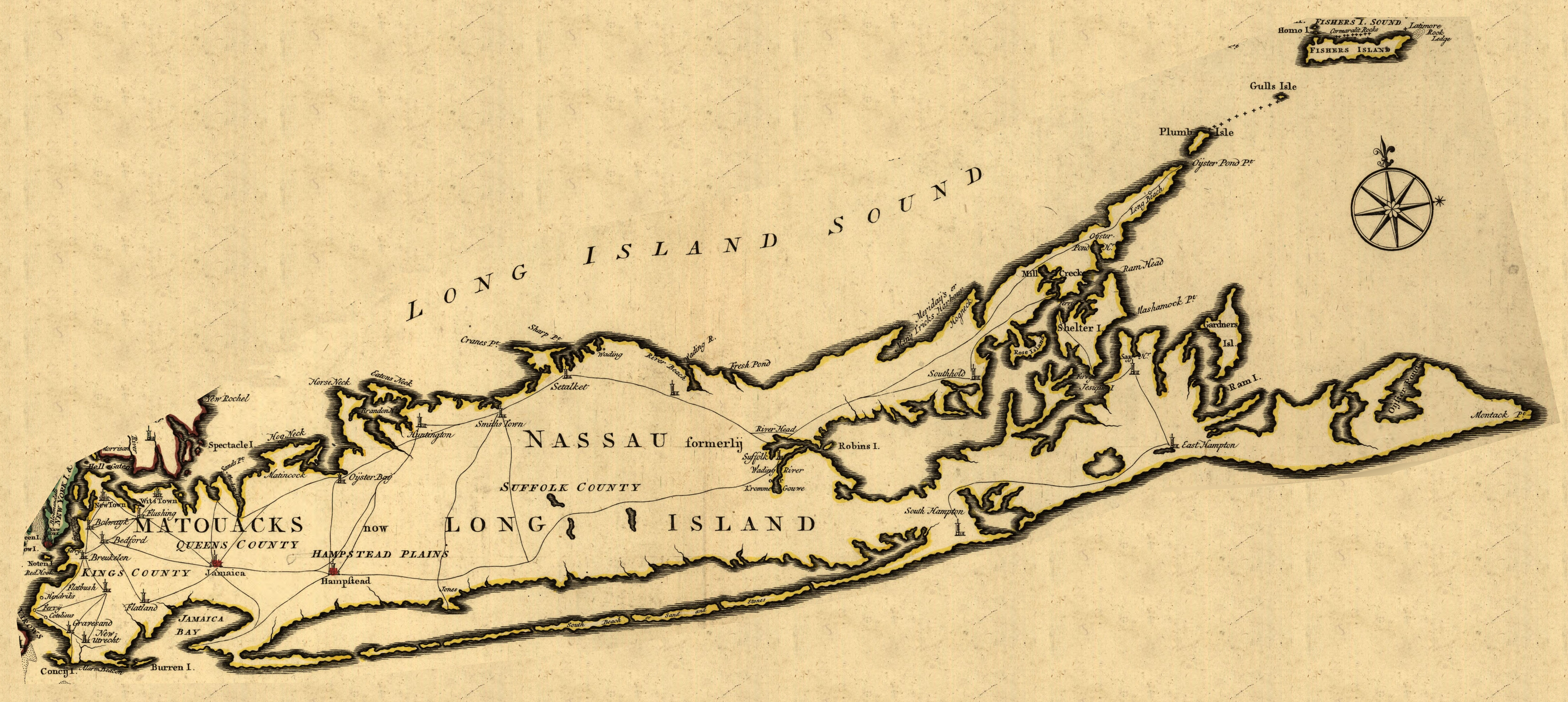
The three major ‘highways’ of colonial Long Island — North Country Road, Middle Country Road, and South Country Road — were laid out and constructed within thirty years after the highway commissions first planned their routes. These routes still exist in many places and have been made into parts of today’s Route 25A, Route 25, or Jericho Turnpike, and Montauk Highway.
History of Horseblock and Middle Country Roads
More Details +
The General Assembly appointed highway commissioners who established east-west dirt roads significant parts of which evolved into today’s 25A, Jericho Turnpike and Montauk Highway.
In Long Island’s early history, the only transportation options were narrow footpaths and waterways. Most paths were no more than two or three feet wide.
Through use and clearing, early European settlers widened the most traveled paths into cartways that could accommodate horse- or ox-drawn carts.
In 1703, the New York General Assembly appointed highway commissioners in each of the three counties then on Long Island: King’s County (now Brooklyn), Queen’s County (now Queens and Nassau), and Suffolk County to direct the building and maintenance of roads “four rods wide” (66 feet). These roads were unpaved, only packed to hardness by foot, horse, and cart traffic. Over time, drainage ditches were dug, and logs or wooden planks were added as road surfaces to make them more usable in wet weather.

The three major ‘highways’ of colonial Long Island — North Country Road, Middle Country Road, and South Country Road — were laid out and constructed within thirty years after the highway commissions first planned their routes. These routes still exist in many places and have been made into parts of today’s Route 25A; Route 25 or Jericho Turnpike; and Montauk Highway.
1792 — Montauk Point Lighthouse commissioned
Authorized by the Second United States Congress and commissioned by George Washington in 1792, it was the first lighthouse in New York State. It was intended to facilitate shipping to New York Harbor. Ships approaching from the east needed a beacon to guide them south of Long Island.
About the Montauk Point Lighthouse - Montauk Historical Society
1796 — Montauk Point Lighthouse constructed
Construction began on the Lighthouse on June 7, 1796, and was completed on November 5, 1796. The Montauk Point Lighthouse tower is 110 feet 6 inches high and was one of the first federal public works projects of the United States of America.
1834 — Long Island Rail Road chartered
The Long Island Rail Road (LIRR) was granted a charter by the NY State Legislature in 1834. It was not intended to serve Long Island, however. The main purpose of the railway was to carry passengers between New York City and Boston, with a ferry ride between Greenport and Stonington, Connecticut, to connect to a railroad that continued to Boston. The terrain of Southern Connecticut was considered impractical for building rail at the time. Land for a right-of-way down the center of Long Island was relatively flat, had no major rivers to traverse, and was sparsely settled, so it had few grade crossings and was inexpensive. The track reached Hickville in 1837. Passengers from Long Island’s more populated communities on the north and south shores needed to take long stagecoach rides to reach the stations.
Long Island Railroad History - Long Island Historical Journal
1844 — LIRR main line completed
Service to Greenport began in 1844. There, a steamboat owned by the LIRR took passengers across the Long Island Sound to continue by rail to Boston. The LIRR became the primary passenger and mail route between the two cities. In 1848, the completion of the New York and New Haven Railroad through southern Connecticut provided a quicker, fully overland route between New York City and Boston. The LIRR was forced to begin serving Long Island. It expanded to the more populous north and south shores by building a new branch that eventually reached Huntington and consolidating with two other local railroad companies. The LIRR began to promote Long Island as a resort destination.
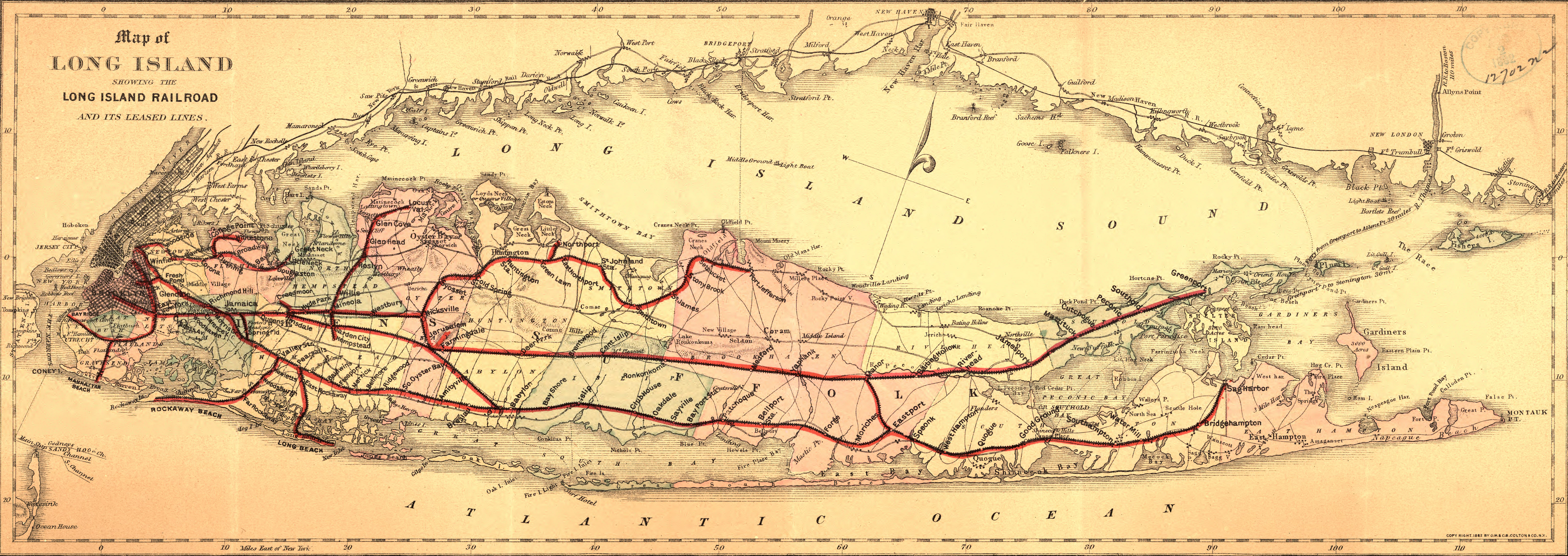
More Details +
Service to Greenport began in 1844. There, a steamboat owned by the LIRR took passengers across the Long Island Sound to continue by rail to Boston. The combined trip cut 5 hours off the shortest land route between New York City and Boston at the time. There was competition with other rail and steamship routes, but the LIRR became the primary passenger and mail route between the two cities.

In 1848, the completion of the New York and New Haven Railroad through southern Connecticut provided a quicker, fully overland route between New York City and Boston. The LIRR’s profits collapsed.
The LIRR was forced to begin serving Long Island. It expanded to the more populous north and south shores by building a new branch that eventually reached Huntington and consolidating with two other local railroad companies. To increase ridership, the LIRR began to promote Long Island as a resort destination. It provided excursion service to shorefront communities where resort hotels had been built.
Long Island Railroad History - Long Island Historical Journal
1883 — Brooklyn Bridge completed
Construction began on the Brooklyn Bridge in 1869 and was completed in 1883. Designed by John Roebling, the bridge was the longest suspension span in the world at the time. It provided the first connection to Long Island without a boat.
Brooklyn Bridge History - history.com
About the Brooklyn Bridge - NYC Department of Transportation
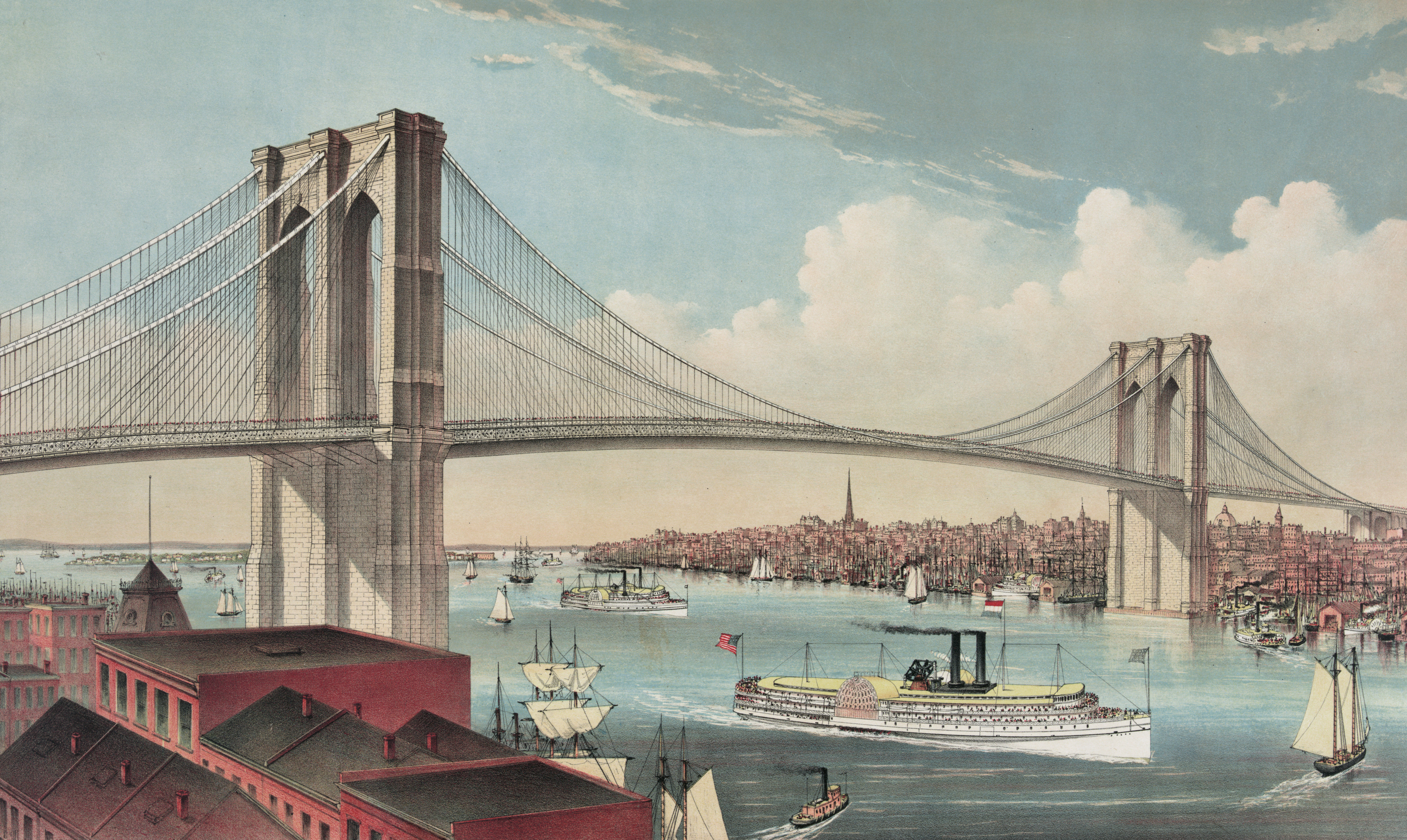
1883 — Port Jefferson Ferry established
The Bridgeport & Port Jefferson Steamboat Company began operations between Port Jefferson, L.I. and Bridgeport, Connecticut. The co-founder and first president of the company was P.T. Barnum.
History of The Bridgeport & Port Jefferson Steamboat Company
1894 — Sayville Ferry service to Fire Island
The service was initiated by Karl Stein, a young German immigrant, as a weekend, chartered service ferrying passengers on day trips to Fire Island. The fare was 10¢ and included a bowl of chowder. There was no designated landing spot on Fire Island; Karl landed where the most passengers wanted to go. As communities grew on Fire Island, the business grew to provide full-time, regular service.
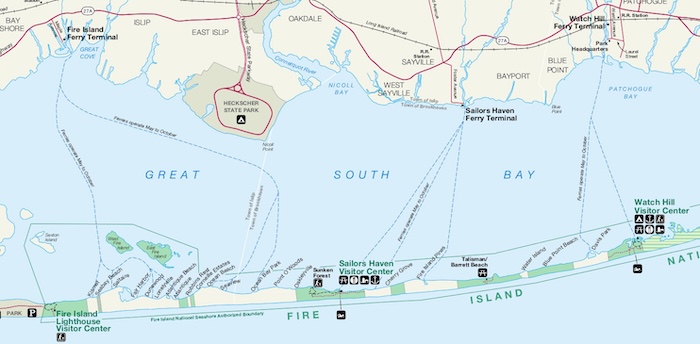
Fire Island Pines Historical Society — Sayville Ferry History.
1908 — Long Island Motor Parkway constructed
Also known as Vanderbilt Parkway, it was the first road designed exclusively for automobiles. The first 10-mile portion, from Queens to Bethpage, was opened on October 10th, 1908. Eventually, the roadway was extended to Lake Ronkonkoma and reached 45 miles in length.
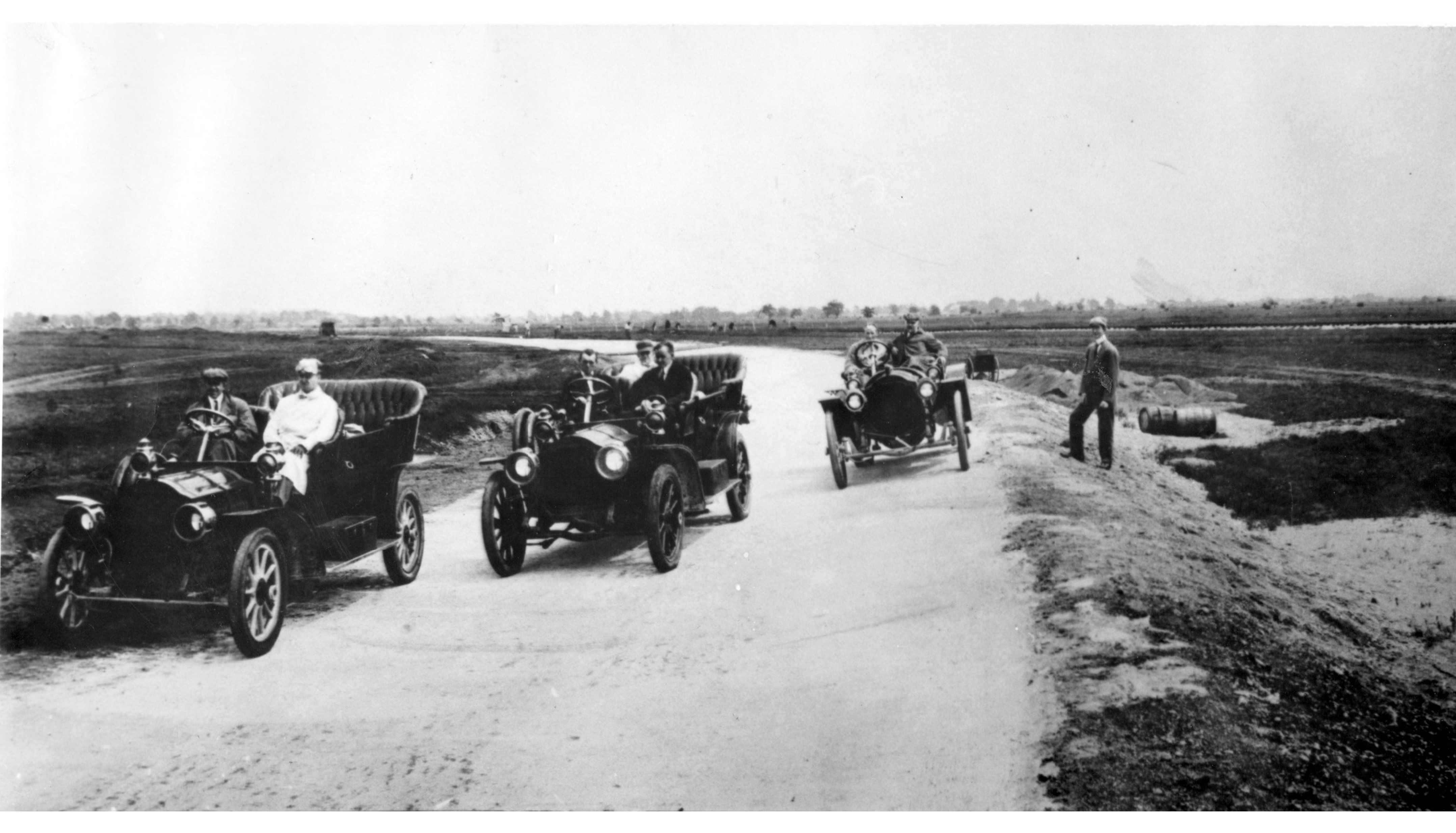
It was the first concrete highway in the U.S. and the world’s first limited-access highway. Overpasses and bridges were used to eliminate most intersections. Motor Parkway hosted auto races in its early years, but fatal accidents resulted in state legislation banning auto racing except on racetracks.
More Details +
Also known as Vanderbilt Parkway, it was the first road designed exclusively for automobiles. The first portion completed was a 10-mile stretch from Queens to Bethpage. That was opened on October 10th, 1908. Eventually, the roadway was extended to Lake Ronkonkoma and reached 45 miles in length.

It was the first concrete highway in the U.S. and the world’s first limited-access highway. Overpasses and bridges were used to eliminate most intersections. Motor Parkway hosted auto races in its early years, but fatal accidents resulted in State Legislation banning auto racing except on racetracks.
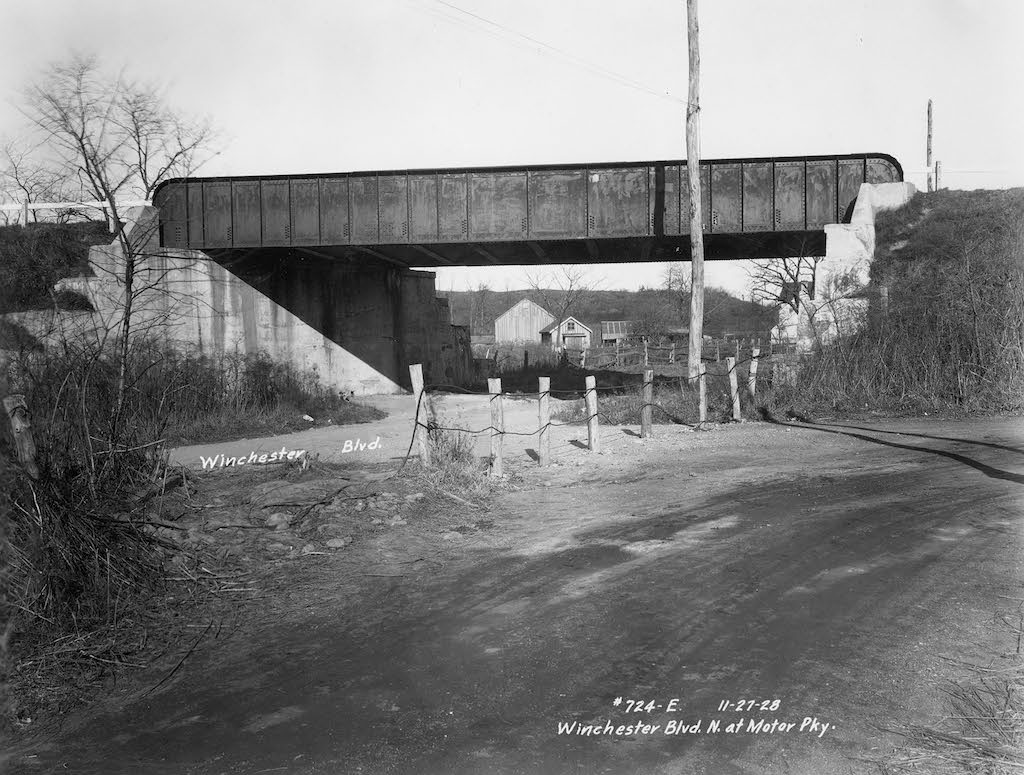
Motor Parkway was operated as a private toll road until it was closed and taken over by New York State for unpaid back taxes. The roadway still exists in places as parts of other roads and a bicycle and walking path.
1909— Powered aircraft flight comes to Long Island
The Hempstead plains in central Nassau were an ideal location for early aviation, being treeless, flat, and close to the concentration of population and capital in New York City. Long Island became a major center for aviation in the early 20th century, marking several aviation firsts. Long Island’s history in aviation is on display at the Cradle of Aviation Museum in Garden City, on property that was once part of Mitchel Field, at one time the premier air base for the U.S. military.
1910 — Long Island Rail Road service to Pennsylvania Station begins
The Pennsylvania Railroad (PRR) acquired the Long Island Rail Road in 1900. PRR invested in improving rail connections to downtown Manhattan, leading to the construction of Pennsylvania Station, which became a central hub for both intercity and commuter rail. The LIRR was directly integrated into the station's infrastructure, with four tunnels built beneath the East River to connect Long Island to the new terminal.
The grand opening of Pennsylvania Station occurred in stages, with LIRR service beginning on September 8, 1910, and the full terminal opening on November 27, 1910. Direct access to Manhattan increased LIRR ridership to 34 million in the next year.
Article: "The First LI Rail Road Trains Pull into Penn Station"
1911 — First official Air Mail flight in the U.S. and first transcontinental trip across North America
The first official air mail flight in the United States took off from an aviation meet held in Garden City in 1911. That same year, Cal Rodgers took off from Long Island in a Wright biplane to cross the U.S. He ended his trip in California, 49 days later.
1918–1939 — The Golden Age of Aviation
After WWI, aviation transformed from a dangerous sport to a major industry. About 20 aircraft manufacturers were established on Long Island in this period, including Sikorsky, Sperry, Fairchild, Brewster, Columbia, Republic, and Grumman.
1919 — First transatlantic flight
A Navy Curtiss flying boat, NC-4, which had been built in Garden City, flew from Long Island to England with two stops.
1923 — First non-stop flight across the U.S.
The first non-stop flight across the U.S. took off in a Fokker T-2 triplane from Roosevelt Field on May 2. Two pilots, John Macready and Oakley Kelly, had only a compass and railroad maps to navigate. They landed at San Diego, almost 27 hours later.
1927 — Construction of Long Island State Parkways begins
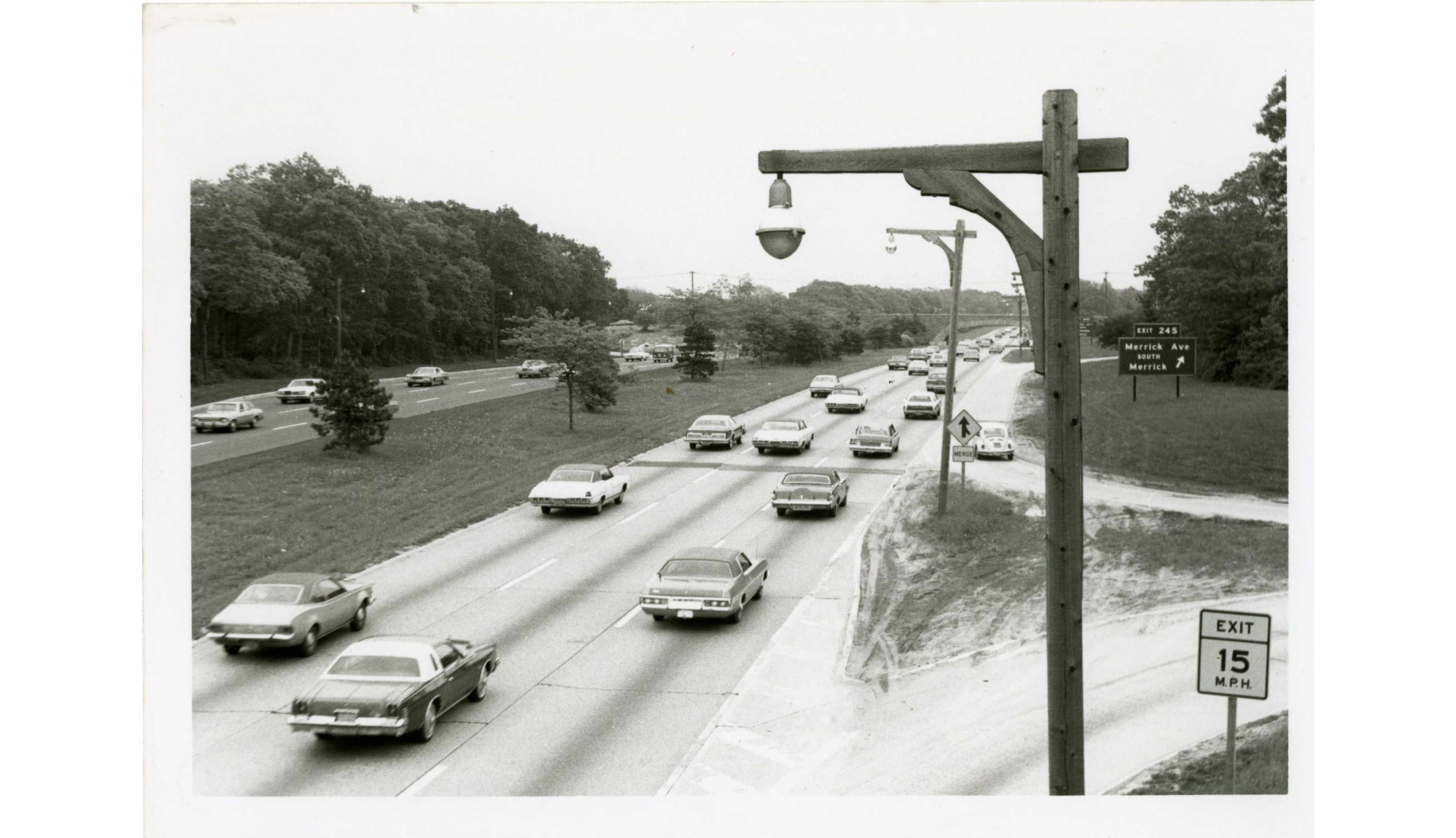
The parkway system was conceived by Robert Moses, a commissioner of the Long Island State Parks Commission from its establishment in 1924 until 1963. The Long Island parkways were modeled after the Bronx River Parkway, which was built between 1906 and 1925. The parkway system was intended to create scenic, efficient access to the state parks and beaches being developed on Long Island, which did not rely on increasingly congested and unattractive local roads. The first section of the Southern State Parkway was opened to public use in 1927. Ocean Parkway and the Jones Beach Causeway were opened, providing access to Jones Beach by the summer of 1929.
More Details +

The parkway system was conceived by Robert Moses, a commissioner of the Long Island State Parks Commission from its establishment in 1924 until 1963. The Long Island parkways were modeled after the Bronx River Parkway, which was built between 1906 and 1925. Parkway construction on Long Island continued through the 1960s.
The parkway system was intended to create scenic, efficient access to the State Parks and beaches being developed on Long Island, which did not rely on increasingly congested and unattractive local roads. The first section of the Southern State Parkway was opened to public use in 1927. Ocean Parkway and the Jones Beach Causeway were opened, providing access to Jones Beach by the summer of 1929.
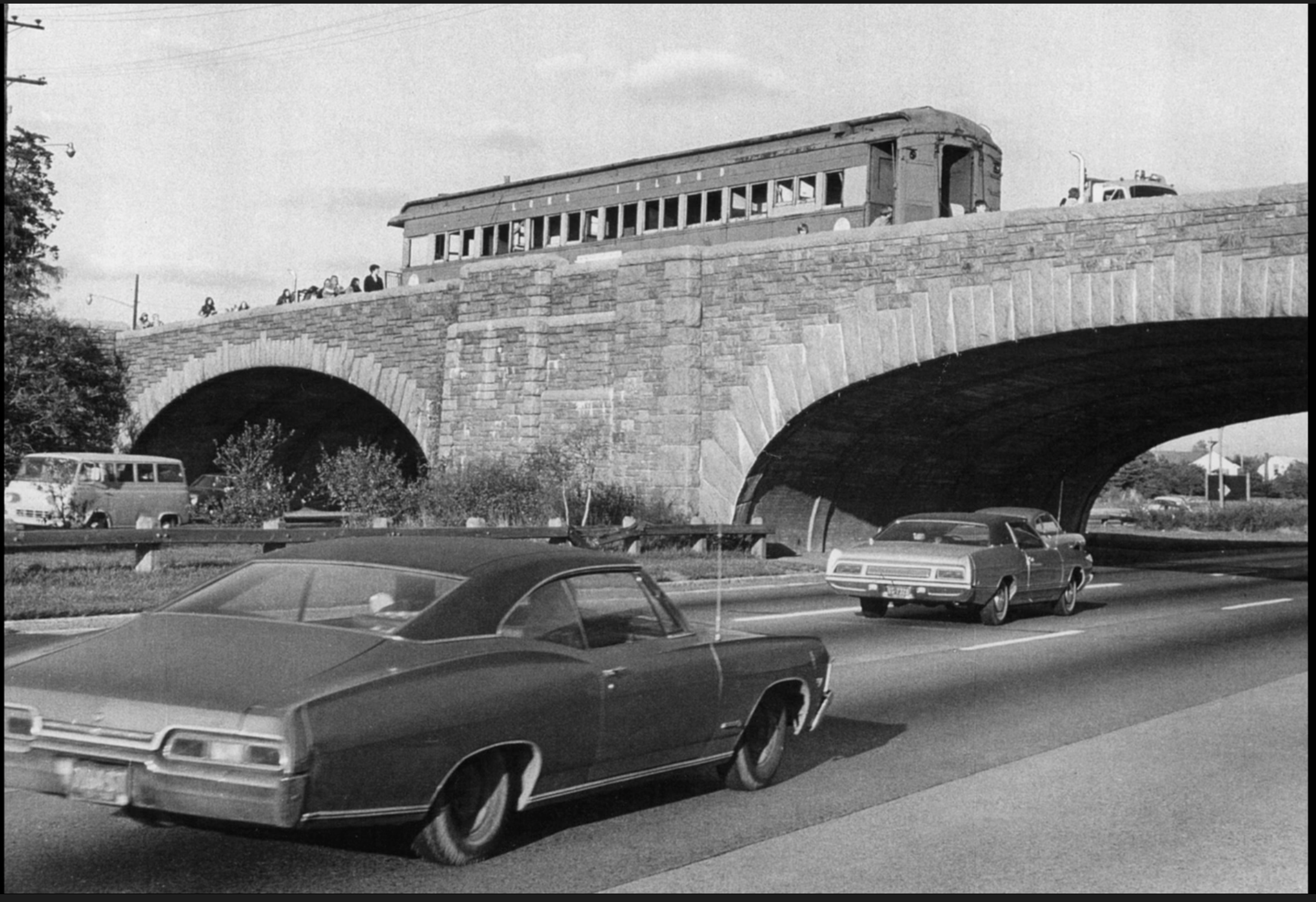
History of the Long Island Parkway System
Long Island Parkways Collection - Hofstra University (PDF)
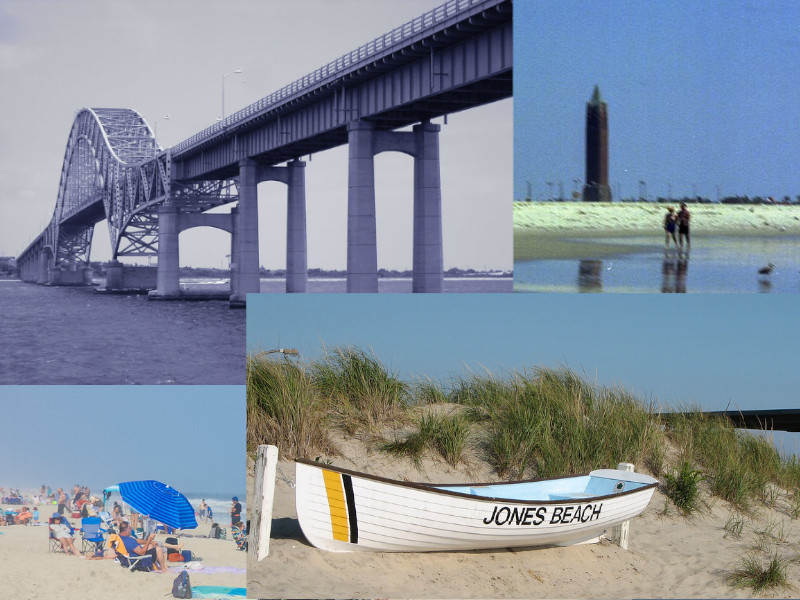
Photos credits: Robert Moses Causeway - Doug Kerr - CC BY-SA 2.0, Fire Island Needle - MFer Photography - CC BY-ND 2.0, Robert Moses Beach - Joe Shlabotnik - CC BY-NC-SA 2.0, Jones Beach Rescue boat - Neill Clenaghan - CC BY-NC-ND 2.0
Robert Moses changed the face of Long Island's roadway system. Here is a list of Long Island highways built under Moses' direction:
• Northern Parkway
• Southern Parkway
• Meadowbrook Parkway
• Wantagh Parkway
• Sagtikos Parkway
• Sunken Meadow Parkway
• Ocean Parkway
• Long Island Expressway
There have been strong criticisms of Moses’ autocratic approach, disregard for existing communities, and alleged racism and classism. Two particular examples involving Long Island’s parkways are recorded in Robert Caro’s biography of Moses, The Power Broker. The original route of the Northern State Parkway was changed to avoid a private golf course and a wealthy community that had the economic and political clout to fight back against Moses’ plans. The resulting change of route further south through the land of less influential farmers resulted in a curve in the roadway that was nicknamed “Objectors’ Bend”. Some claim that the bridges over the parkways were built too low for buses to drive under them at Moses’ direction, to keep the poor and minorities from easily accessing Long Island’s State beaches and parks.
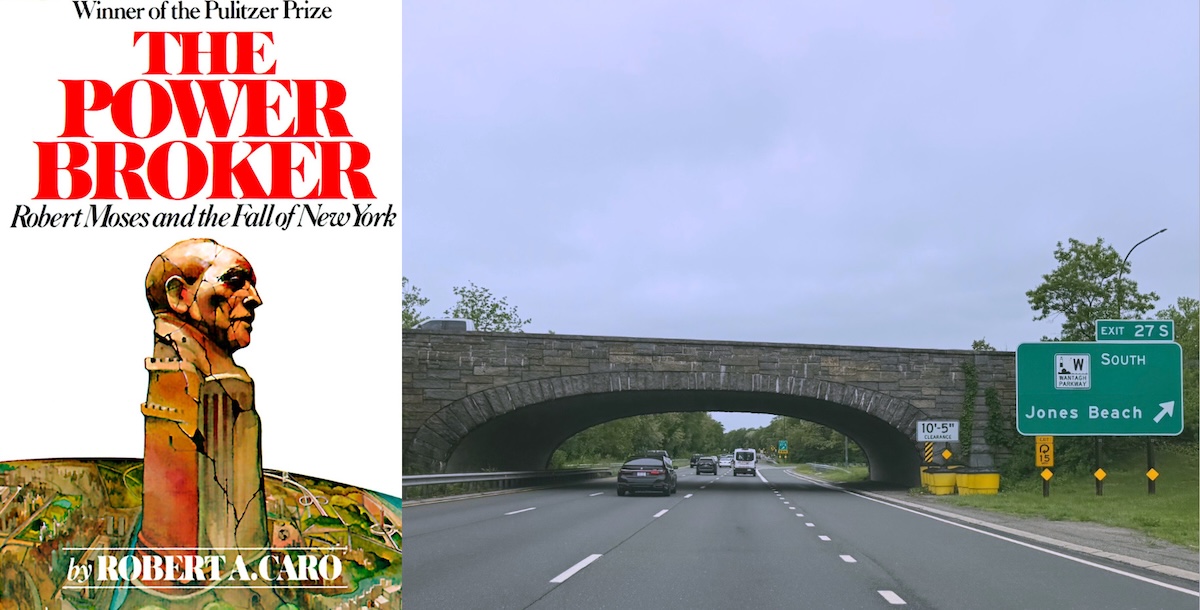
1927 — Charles Lindbergh’s first solo, non-stop, transatlantic flight.
Lindberg took off from Roosevelt Field, May 20th, 1927, in his plane, the Spirit of Saint Louis. Roosevelt Field had been a training facility for the US Army Air Service in WWI, and had been the destination for the first aircraft (the British airship R34) to travel across the Atlantic from east to west. At one point in the 1930s, it was the busiest commercial airfield in the United States.
Long Island's Roosevelt Field — Metropolitan Airport News
1938 — First cross-sound bridge proposal
Senator Copeland, chair of the U.S. Senate Commerce Committee, proposed an 18-mile bridge from Orient Point to Groton, CT, or Watch Hill, RI. Engineering surveys were begun, but the project was abandoned when Senator Copeland died. Since then, there have been at least nine proposed projects or studies of bridges and/or tunnels to cross Long Island Sound. Besides Orient Point, other proposed locations for the Long Island side have been Oyster Bay, Syosset, Kings Park, Port Jefferson, Wading River, Riverhead, and East Marion. However, the easternmost connection remains the Throgs Neck Bridge.
1939 — First transatlantic commercial passenger flight
Pan Am flew the first 22 paying passengers to cross the Atlantic. The flight from Port Washington to Lisbon, Portugal, was made in a Boeing Dixie Clipper flying boat.
1939 — Long Island Expressway (LIE) construction begins
Work started on the LIE with the Queens-Midtown Tunnel. Construction continued until it reached Riverhead in 1972. Robert Moses, who served as New York City’s arterial coordinator, argued that a highway connection to the tunnel was unnecessary. In 1945, when Moses took control of the New York City Tunnel Authority and formed the Triborough Bridge and Tunnel Authority (TBTA), he changed his stance on the connection, and the TBTA paid for an elevated highway extension.
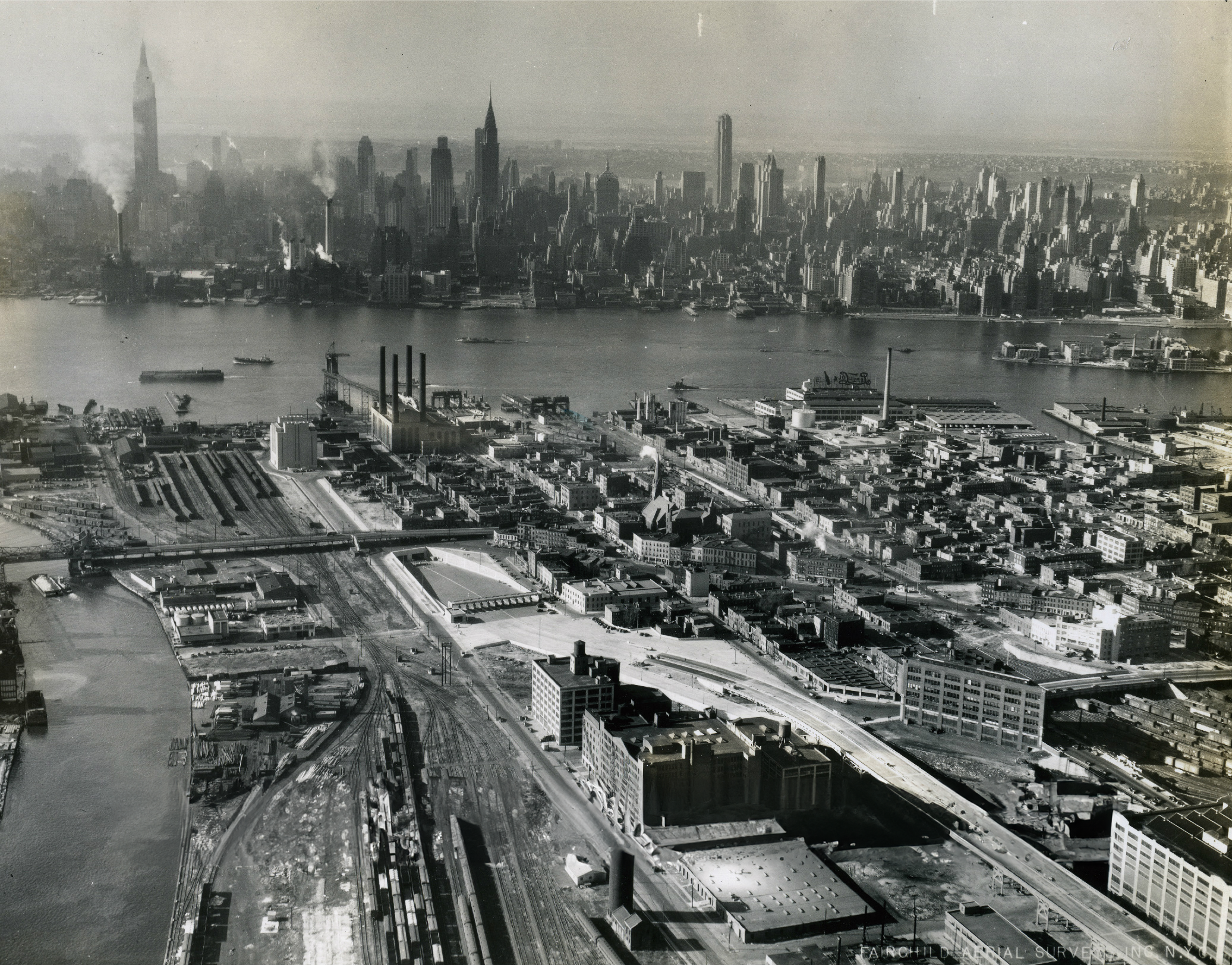
In Robert Caro’s biography of Moses, it’s documented that Moses rushed into construction to bypass studies on the feasibility of potential mass transit lines along the LIE’s right of way within NYC limits. Plans for rail along the LIE right-of-way in Nassau and Suffolk were also abandoned.
Long Island Expressway Historical Overview — nycroads.com
1945 — WWII aircraft industry boom
Production of military aircraft became a major part of the Long Island economy. In 1945, over 100,000 people were employed in the aviation industry. Two aircraft manufacturers, Grumman and Republic, were predominant. The aerospace industry continued to be a major employer into the 1980s. Grumman was Long Island’s largest employer for much of this time.
Post WWII — Autos become dominant
Even as the LIRR reaches its peak ridership of nearly 92 million passengers, the development of Long Island becomes more and more focused on cars.
1948 — Fire Island Ferry
Fire Island Ferries began operating in 1948 and serves as a key transportation link between Long Island and Fire Island across the Great South Bay. Over the years, the agency expanded its operations and fleet, including acquiring other ferry and water taxi services. In 1972, Edward J. Mooney acquired the company and led its growth in becoming Fire Island’s biggest ferry company until his passing in 2020.
Fire Island Ferries, Inc. now services over 1 million people annually, operates 8 routes, connecting various Fire Island communities such as Kismet, Ocean Beach, Saltaire, and Ocean Bay Park.
1952 — Sagtikos State Parkway opens
The Sagtikos State Parkway officially opened in 1952, serving as a critical north-south connector on Long Island. The idea for the parkway dates back to the 1920s, with the goal of linking the Northern State Parkway to the Southern State Parkway. The Sagtikos Parkway was part of the Long Island Regional Park and Parkway Plan, spearheaded by Robert Moses, the influential planner behind much of the Island’s parkway system. The road was designed to connect with other major thoroughfares, including the Sunken Meadow State Parkway and Captree State Parkway (now the Robert Moses Causeway).
In 2012, it was designated a National Historic Parkway, recognizing its significance in Long Island’s transportation history.
More Details +
The Sagtikos State Parkway officially opened in 1952, serving as a critical north-south connector on Long Island. The idea for the parkway dates back to the 1920s, with the goal of linking the Northern State Parkway to the Southern State Parkway. To facilitate construction, the heirs of David Gardiner, the owner of the historic Sagtikos Manor, donated nearly 200 acres of land to the Long Island State Park Commission. Additional land was provided by James Fisher, a nearby resident, ensuring that the necessary right-of-way was available for the parkway's route.
The Sagtikos Parkway was part of the Long Island Regional Park and Parkway Plan, spearheaded by Robert Moses, the influential planner behind much of the island’s parkway system. The road was designed to connect with other major thoroughfares, including the Sunken Meadow State Parkway and Captree State Parkway (now the Robert Moses Causeway).
Construction was funded through a $3 million allocation in 1950, with paving contracts awarded in 1951. The parkway was completed and opened without major public celebration in 1952, but additional upgrades and connections led to its official designation as a completed route in 1958. Over the years, the Sagtikos Parkway has remained a vital transportation corridor, handling 90,000 vehicles per day in some sections. In 2012, it was designated a National Historic Parkway, recognizing its significance in Long Island’s transportation history.
To this day, the parkway continues to face challenges such as narrow shoulders, short acceleration lanes, and low clearance issues, prompting discussions on modernization while preserving its historic character.
Sagtikos State Parkway - History - Construction and Opening — liquisearch.com
Parkway Upgrade Needed for Improved N-S Travel — Long Island Regional Planning Council
1957 — Sunken Meadow Parkway opens
The Sunken Meadow State Parkway was constructed as part of Robert Moses' vision for expanding access to Long Island’s parks. Initially, Sunken Meadow State Park was established in 1928, but it remained relatively inaccessible. By the 1950s, demand for better access to the park had grown, leading to the development of the Sunken Meadow Parkway as an extension of the Sagtikos State Parkway.
More Details +
The Sunken Meadow State Parkway was constructed as part of Robert Moses' vision for expanding access to Long Island’s parks. Initially, Sunken Meadow State Park was established in 1928, but it remained relatively inaccessible. By the 1950s, demand for better access to the park had grown, leading to the development of the Sunken Meadow Parkway as an extension of the Sagtikos State Parkway.
The first segment, a 2-mile stretch from the Northern State Parkway to Jericho Turnpike (NY 25), opened on November 29, 1954. The full 7-mile parkway was completed and opened to traffic on April 1, 1957, after an $11 million construction project. The parkway's opening led to a major expansion of Sunken Meadow State Park, which grew to 1,020 acres with additional parking facilities, a cafeteria, an extended boardwalk, and new recreational areas.
The Long Island Parks Commission predicted that Sunken Meadow would become the second most visited park on Long Island after Jones Beach. To accommodate this expected growth, four new parking lots were built, increasing capacity from 3,000 to 7,500 vehicles. The boardwalk was extended from 2,000 feet to 3,700 feet, and a scenic overlook with additional parking for 1,250 cars was constructed.
Sunken Meadow State Parkway — AARoads Wiki
1958 — First “Long Island” section of the Long Island Expressway opens in Nassau
In October of 1958, the section of LIE from exit 32 to exit 39 (Glen Cove Road in East Hills) opened to the public. Robert Moses secured land for the eastern expansion of the Expressway through Old Westbury. Landowners there had successfully prevented the Northern State Parkway from taking a similar path, resulting in “Objectors' Bend.” Part of the agreement to put the LIE through included not allowing interchanges for a 4-mile portion of the highway.
Long Island Expressway Historical Overview — nycroads.com
1960 — Long Island MacArthur Airport
Long Island MacArthur Airport (ISP), located in Ronkonkoma, New York, serves the central Long Island area. Originally built as a military airfield in 1942, it became a commercial airport in 1960. ISP offers both general aviation and commercial airline services, with a significant portion of operations being general aviation.
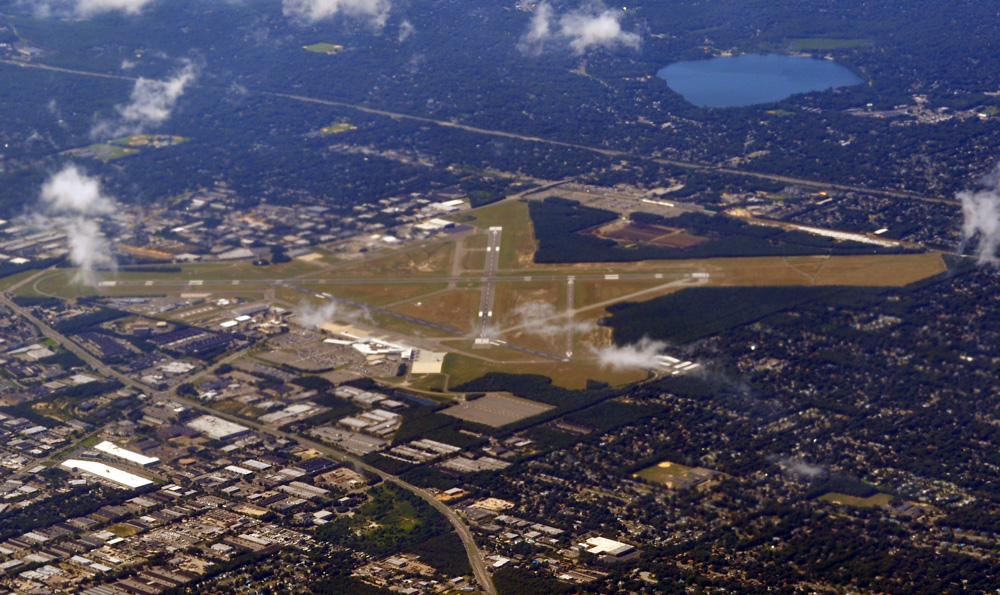
Photo credit: Eric Salard, CC BY-SA 2.0, via Wikimedia Commons
More Details +
Long Island MacArthur Airport (ISP), located in Ronkonkoma, New York, serves the central Long Island area. Originally built as a military airfield in 1942, it became a commercial airport in 1960. The airport is named after General Douglas MacArthur, who became famous for his escape from the Philippines during World War II. ISP offers both general aviation and commercial airline services, with a significant portion of operations being general aviation.

Photo credit: Eric Salard, CC BY-SA 2.0, via Wikimedia Commons
Over the years, the airport has seen growth, serving over 1.29 million passengers in 2017. It has been a key hub for regional flights, with carriers like Spirit Airlines, Southwest Airlines, and American Airlines offering flights to destinations like Orlando, Fort Lauderdale, and Chicago. The airport remains a vital transportation option for Long Island, providing services to both commercial and private aviation.
The History of Long Island MacArthur Airport — Northwestern Airlines blog
1965 — Metropolitan Commuter Transportation Authority purchases the Long Island Rail Road
The Metropolitan Commuter Transportation Authority (MTCA) was created in 1965 by New York Governor Nelson Rockefeller in response to growing concerns about the financial struggles of regional transportation systems. It was set up to oversee and manage the Long Island Rail Road, which had been operating under bankruptcy protection for over a decade, and other commuter rail lines in the New York City metropolitan area. Over the next few years, the MCTA expanded its scope, eventually absorbing the New York City Transit Authority (which operated subways and buses) and the Triborough Bridge and Tunnel Authority (which operated toll bridges and tunnels). This consolidation culminated in March 1968 when the MCTA was renamed the Metropolitan Transportation Authority (MTA) to reflect its broader responsibilities. The MTA continues to manage a wide range of transportation services in the New York metropolitan area, making it one of the largest public transportation providers in the world.
Metropolitan Transportation Authority — Wikipedia
1969 — Moon landing
On July 20, 1969, the Apollo 11’s lunar module “Eagle” touched down on the surface of the moon. The Long Island-based Grumman Aerospace (Bethpage), which employed tens of thousands of Long Islanders, manufactured the NASA Lunar Module that safety landed astronauts on the moon.
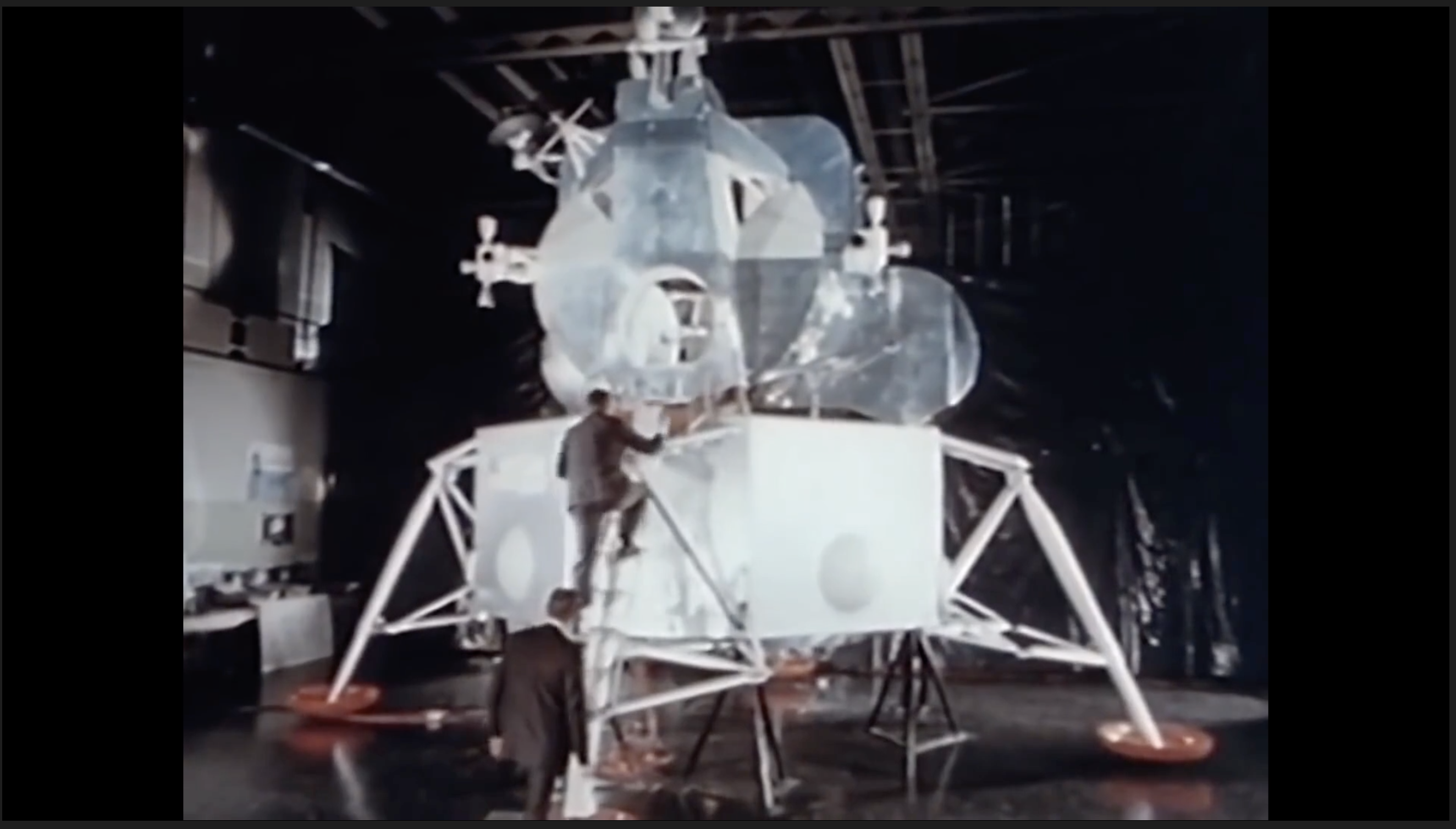
To the Moon: Grumman, the company that built Apollo 11's Lunar Module — ZDNET
1972 — Long Island Expressway completed
The Long Island Expressway (LIE) was completed in segments, with its first section opening in 1940 as the Queens-Midtown Expressway. By the 1960s, it had expanded into a major route connecting Queens to Long Island's eastern counties. The LIE, a project spearheaded by Robert Moses and the Triborough Bridge and Tunnel Authority, aimed to alleviate worsening traffic congestion, and accommodate growing commercial traffic on Long Island. Its completion reached Riverhead on June 28, 1972. The highway, originally designed to handle 80,000 vehicles daily, now sees over 200,000 in some areas.
Long Island Expressway (LIE) Facts and History — longisland.com
Long Island Expressway — NYC Parks
1973 — Metropolitan Suburban Bus Authority
In 1973, Nassau County took control of the Metropolitan Suburban Bus Authority's operations in the county, purchasing assets from private transit companies and partnering with the Metropolitan Transportation Authority (MTA). This partnership led to the creation of the Metropolitan Suburban Bus Authority (MSBA), an MTA subsidiary. While Nassau County was responsible for funding the operations and capital expenses, the MTA handled the management of the system. In the late 1990s, the MSBA became known as MTA Long Island Bus as part of a broader MTA rebranding. By 2012, due to financial disputes, Nassau County transitioned to a new operator, and the system became part of Nassau Inter-County Express (NICE), operated by Transdev.
Nassau Inter-County Express — Wikipedia
MTA Long Island Bus — CPTDB Wiki
1974 — Hampton Jitney
The concept of the Hampton Jitney was born in 1973 during the energy crisis, sparked by the Arab oil embargo and a gasoline shortage. Jim Davidson, a young entrepreneur living in Water Mill, initially envisioned a service using bikes and small vans to help people get around the Hamptons without relying on cars. The idea evolved when he started offering a regular minivan service between the Hamptons and New York City in 1975. The service proved successful, leading to its expansion, with a second van introduced due to growing demand. Over the years, the service shifted from small vans to larger motor coaches, offering a luxurious and reliable way to travel between the Hamptons and New York City.
A History of the Hampton Jitney — Dan's Papers
1977 — Jones Beach Bicycle Path
The Jones Beach Bicycle Path, built in 1977, is a scenic and popular route along the southern shore of Long Island. This path stretches up to 10 miles and offers cyclists stunning views of the Great South Bay and the Atlantic Ocean. It's designed with a variety of surfaces, including paved paths and boardwalks, providing a safe and scenic ride for cyclists. Notably, the path passes through beautiful coastal environments and beaches where riders can stop to swim or grab a bite. It is part of a larger network that connects various parks, such as Cedar Creek County Park, Jones Beach State Park, and Captree State Park.
About the Jones Beach Bike Path
1980 — Suffolk County Transit
Formed by the Suffolk County Legislature as a consolidation of several bus routes operated by private companies, many of which became contractors to the County, Suffolk County Transit began operating in 1980.
The system is responsible for providing critical transportation services throughout Suffolk County, including suburban routes that serve residents traveling for work, shopping, or other activities. Many of these buses are equipped with the latest technology for energy efficiency and passenger comfort. The transit system continues to evolve as it updates its fleet and services in response to growing community needs and environmental considerations.
Suffolk County Transit Wiki
1991 — LIE High Occupancy Vehicle (HOV) Lane
Construction begins on the Long Island Expressway High Occupancy Vehicle (HOV) Lane. The lane is restricted to motorcycles and vehicles with more than one occupant during rush hours.
2005 — LIE HOV completed
The final section of the Long Island Expressway is completed. The HOV lanes run between EXIT 32 (Little Neck Parkway) and EXIT 64 (NY 112). They are intended to encourage carpooling. The High Occupancy Vehicle (HOV) Lane is the last major highway construction project on Long Island. Studies have found that it does provide a quicker commute during rush hour for those who can use it. However, census data does not indicate that carpooling has increased as a result.
Long Island Expressway Historical Overview
2006 — Clean Pass
In 2006, the state of New York initiated the Clean Pass program, allowing eligible low-emission and ultra-low-emission vehicles to use the HOV lane on the Long Island Expressway (LIE), even with just one occupant. This pilot program aimed to promote the adoption of fuel-efficient vehicles and reduce emissions. It was projected to save 6,000 tons of greenhouse gases and over 500,000 gallons of gasoline annually. Eligible vehicles at the time included hybrids like the Toyota Prius and Honda Civic Hybrid, but the list has since expanded as more and more automobile manufacturers offer additional qualifying vehicle options. The program was initially evaluated for effectiveness before permanent implementation.
Former Senator John Flanagan Announces Environmental Use of HOV Lane
2011 — MTA Tax & Complete Streets Act
A tax imposed on employers and some self-employed individuals in counties that are served by the MTA. It proved highly unpopular and was subsequently repealed.
Complete Streets Act - The New York State Legislature required state, county, and local agencies to consider safe and convenient access for all users of streets (including pedestrians, bicyclists, people with disabilities, etc.) when planning and designing street projects.
2012 — NICE Bus
After years of funding disagreements with the MTA, Nassau County contracts with a private operator to take over bus service in the county. The service was renamed Nassau Inter-County Express (NICE).
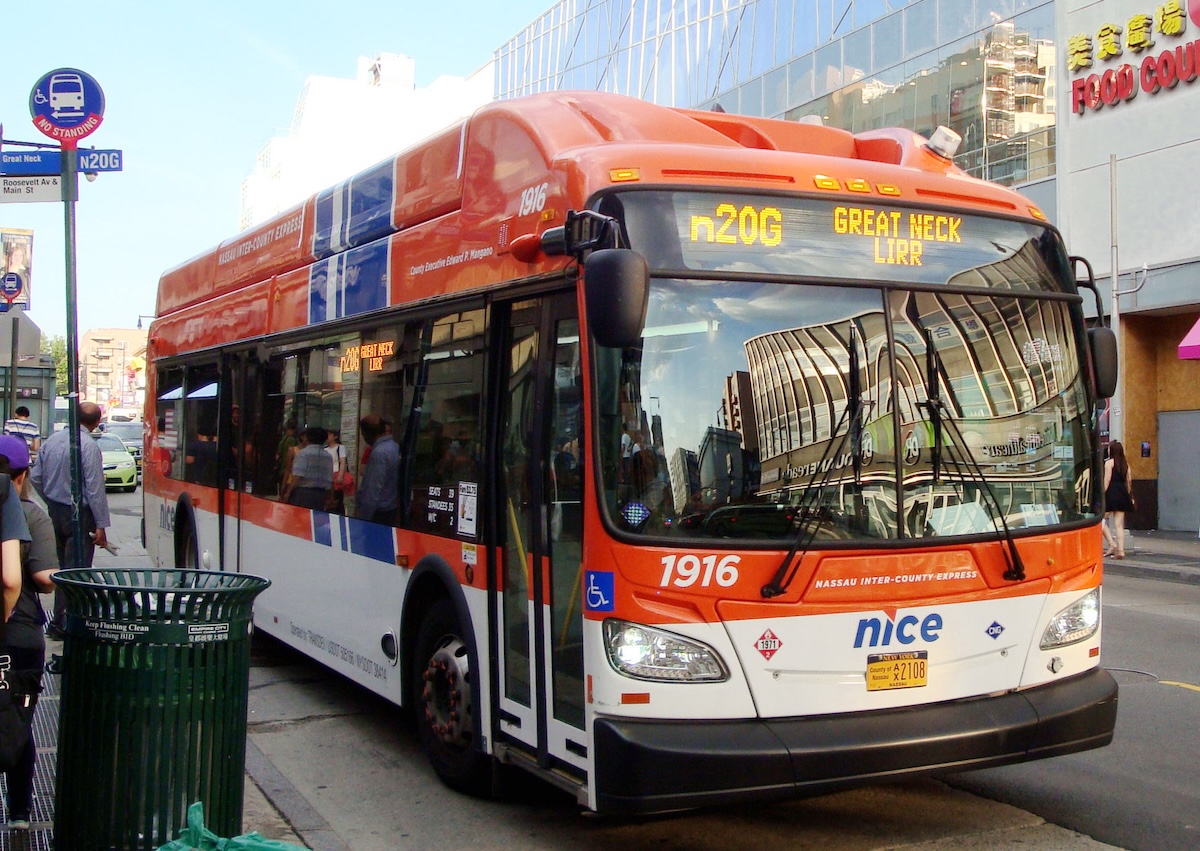
2013 — Ocean Beach Parkway rebuilt
The Ocean Beach Parkway, which was severely damaged during Superstorm Sandy, was rebuilt in time for the summer.
2016 — LI Welcome Center opens
Operated by Cornell Cooperative Extension of Nassau County, the 15,200 square foot center opened at eastbound Exit 51-52 on the Long Island Expressway. The exterior features pay homage to Long Island’s nautical nature. Inside the LEED-certified building, visitors can find travel inspiration for any Long Island trip, and can grab a snack at the full Taste NY market counter, featuring prepared and refrigerated foods from Long Island purveyors. The center also includes two electric car charging stations, an animal comfort area, and interactive tourism information with suggested destinations based on the user’s interests, from local wineries to beach recommendations.
Long Island Welcome Center website
2017 — LI Sound Crossing Feasibility Study
High-level feasibility analysis to understand and identify if a Long Island Sound Crossing from Long Island to the mainland could improve the region’s overall transportation network. Study goals included (1) Improve regional mobility and connectivity; (2) Promote economic growth; (3) Minimize adverse environmental impacts; and (4) Develop cost-effective transportation options.
Feasibility Study - NY Department of Transportation
2018 — Long Island Rail Road Double Track project
The Long Island Rail Road (LIRR) Double Track project, completed in 2018, added a second track along a 13-mile stretch between Farmingdale and Ronkonkoma and carries 48,000 riders a day. This expansion improved service reliability, increased train frequency, and supported economic growth on Long Island. The project, which cost approximately $387.2 million, was a key part of broader MTA infrastructure improvements, helping reduce delays, congestion, and allow for reverse-peak service expansions on the busy corridor.
ABC7 News article on the completion of the project.
2021 — Ocean Parkway Coastal Greenway
A spectacular bike and multi-use trail is extended along the Jones Beach barrier island alongside the Ocean Parkway and connects with the existing bike and multi-use trail.
2022 — LIRR Third Track
Completion of the third track for the LIRR main line between Mineola and Hicksville. The additional track improves frequency of service, reliability, and 'reverse' commuting.
MTA information on the project.
2023 — East Side Access completed
The new Grand Central Madison station opened on January 25, 2023. The extension of the Long Island Railroad’s Main Line provides a second terminal in Manhattan for Long Island commuters, removing a subway transfer for many of them. Digging of the 63rd Street Tunnel, a double-deck tunnel that is used by both for LIRR East Side Access and subways, began in 1969, but was halted due to New York City’s fiscal crisis of 1975. Construction on East Side Access resumed in 2007.
Recent LIRR infrastructure improvements, including East Side Access, the Main Line Third Track, and the Ronkonkoma Line Double Track, have allowed for a 41% increase in service and significant increases in “reverse peak” travel, trains running from Manhattan to Long Island in the morning and Long Island to Manhattan in the evening.
Summary and Analysis
Long Island has been home to several transportation firsts. Our history also demonstrates that infrastructure built for a particular purpose often results in unintended consequences and ends up being repurposed for new needs. The Long Island Rail Road was established to shorten travel times from New York City to Boston. It became, for a time, the busiest commuter rail system in the world, bringing Long Islanders to jobs in the city. Long Island Motor Parkway, the world’s first limited-access highway, was built for the wealthy auto hobbyists to drive and race without interference from local traffic. Sections of it that remain are now heavily trafficked thoroughfares or have been converted to bike and walking paths. State parkways were intended by Robert Moses to allow New York City residents to take leisurely drives to parks and beaches where they could escape the crowding of the city and enjoy nature. They have become major commuting routes that opened Long Island to suburban sprawl and are now congested with induced-demand traffic.
The region's early embrace of the automobile helped shape the layout of modern suburbs. Infrastructure decisions made decades ago now limit options for mobility and sustainability. As public demand grows for more reliable mass transit, safer bike and pedestrian networks, and reduced traffic congestion, the region must come to terms with how its transportation legacy affects everything from economic access to climate resilience. Revisiting the lessons of the past can help inform investments that create a more connected, equitable, and forward-thinking transportation system for the next generation.